Exercise Performance Measurement with Smartphone Embedded Sensor for Well-Being Management
Abstract
:1. Introduction
2. Materials and Methods
2.1. System Architecture
2.2. Activity Level Estimation Mechanism
2.2.1. Preprocessing
2.2.2. Feature Extraction
2.2.3. Decision Tree Modeling
2.3. Accumulated Activity Effective Index
2.4. Prototype Implementation
2.5. Experiments
2.6. Ethical Statement
3. Results and Discussion
3.1. Activity Level Estimation
3.2. User Experience and System Performance
4. Conclusions
Acknowledgments
Author Contributions
Conflicts of Interest
References
- Hallal, P.C.; Andersen, L.B.; Bull, F.C.; Guthold, R.; Haskell, W.; Ekelund, U. The Lancet Physical Activity Series Working Group. Physical activity levels of the world’s population: Surveillance progress, gaps and prospects. Lancet 2012, 380, 247–257. [Google Scholar] [CrossRef]
- Kohl, H.W.; Craig, C.L.; Lambert, E.V.; Inoue, S.; Alkandari, J.R.; Leetongin, G.; Kahlmeier, S. The Lancet Physical Activity Series Working Group. The pandemic of physical inactivity: Global action for public health. Lancet 2012, 380, 294–305. [Google Scholar] [CrossRef]
- Andre, D.; Wolf, D.L. Recent advances in free-living physical activity monitoring: A review. J. Diabetes Sci. Technol. 2007, 1, 760–767. [Google Scholar] [CrossRef] [PubMed]
- Lee, I.M.; Shiroma, E.J.; Lobelo, F.; Puska, P.; Blair, S.N.; Katzmarzyk, P.T. The Lancet Physical Activity Series Working Group. Effect of physical inactivity on major non-communicable diseases worldwide: An analysis of burden of disease and life expectancy. Lancet 2012, 380, 219–229. [Google Scholar] [CrossRef]
- Kozey, S.L.; Lyden, K.; Howe, C.A.; Staudenmayer, J.W.; Freedson, P.S. Accelerometer output and MET values of common physical activities. Med. Sci. Sports Exerc. 2010, 42, 1776. [Google Scholar] [CrossRef] [PubMed]
- Shoaib, M.; Bosch, S.; Incel, O.D.; Scholten, H.; Havinga, P.J. A survey of online activity recognition using mobile phones. Sensors 2015, 15, 2059–2085. [Google Scholar] [CrossRef] [PubMed]
- Morillo, L.M.S.; Gonzalez-Abril, L.; Ramirez, J.A.O.; de la Concepcion, M.A.A. Low energy physical activity recognition system on smartphones. Sensors 2015, 15, 5163–5196. [Google Scholar] [CrossRef] [PubMed]
- Preece, S.J.; Goulermas, J.Y.; Kenney, L.P.J.; Howard, D.; Meijer, K.; Crompton, R. Activity identification using body-mounted sensors—A review of classification techniques. Physiol. Meas. 2009, 30, R1–R33. [Google Scholar] [CrossRef] [PubMed]
- Liu, C.T.; Hsu, S.J.; Chan, C.T. Activity recognition and activity level estimation for context-based prompting system of mild cognitive impairment patients. In Proceedings of the 11th International Conference on Smart Homes and Health Telematics, ICOST 2013, Singapore, 19–21 June 2013.
- Mannini, A.; Intille, S.S.; Rosenberger, M.; Sabatini, A.M.; Haskell, W. Activity recognition using a single accelerometer placed at the wrist or ankle. Med. Sci. Sports Exerc. 2013, 45, 2193–2203. [Google Scholar] [CrossRef] [PubMed]
- Kwapisz, J.R.; Weiss, G.M.; Moore, S.A. Activity recognition using cell phone accelerometers. ACM SIGKDD Explor. 2010, 12, 74–82. [Google Scholar] [CrossRef]
- Weiss, G.M.; Lockhart, J.W.; Pulickal, T.T.; McHugh, P.T.; Ronan, I.H.; Timko, J.L. Actitracker: A smartphonebased activity recognition system for improving health and well-being. In Proceedings of the 20th ACM SIGKDD Conference on Knowledge Discovery and Data Mining, KDD 2014, New York, NY, USA, 24–27 August 2014.
- Prudêncio, J.; Aguiar, A.; Lucani, D. Physical activity recognition from smartphone embedded sensors. In Proceedings of the 6th Iberian Conference on Pattern Recognition, Madeira, Portugal, 5–7 June 2013.
- Albinali, F.; Intille, S.; Haskell, W.; Rosenberger, M. Using wearable activity type detection to improve physical activity energy expenditure estimation. In Proceedings of the 12th ACM International Conference on Ubiquitous Computing, ACM 2010, Copenhagen, Denmark, 26–29 September 2010; pp. 311–320.
- Banos, O.; Galvez, J.M.; Damas, M.; Pomares, H.; Rojas, I. Window size impact in activity recognition. Sensors 2014, 14, 6474–6499. [Google Scholar] [CrossRef] [PubMed]
- Karantonis, D.M.; Narayanan, M.R.; Mathie, M.; Lovell, N.H.; Celler, B.G. Implementation of a real-time human movement classifier using a triaxial accelerometer for ambulatory monitoring. IEEE Trans. Inf. Technol. Biomed. 2006, 10, 156–167. [Google Scholar] [CrossRef] [PubMed]
- Alshurafa, N.; Xu, W.; Liu, J.J.; Huang, M.C.; Mortazavi, B.; Roberts, C.K.; Sarrafzadeh, M. Designing a robust activity recognition framework for health and exergaming using wearable sensors. IEEE J. Biomed. Health Inf. 2014, 18, 1636–1646. [Google Scholar] [CrossRef] [PubMed]
- Wu, W.; Dasgupta, S.; Ramirez, E.E.; Peterson, C.; Norman, G.J. Classification accuracies of physical activities using smartphone motion sensors. J. Med. Internet Res. 2012, 14, e130. [Google Scholar] [CrossRef] [PubMed]
- Anderson, I.; Maitland, J.; Sherwood, S.; Barkhuus, L.; Chalmers, M.; Hall, M.; Brown, B.; Muller, H. Shakra: Tracking and sharing daily activity levels with unaugmented mobile phones. Mob. Netw. Appl. 2007, 12, 185–199. [Google Scholar] [CrossRef]
- Bexelius, C.; Sandin, S.; Lagerros, Y.T.; Litton, J.E.; Löf, M. Estimation of physical activity levels using cell phone questionnaires: A comparison with accelerometer for evaluation of between-subject and within-subject variations. J. Med. Internet Res. 2011, 13, e70. [Google Scholar] [CrossRef] [PubMed]
- Lin, R.J.; Ramakrishan, S.; Chang, H.; Spraragen, S.; Zhu, X. Designing a web-based behavior motivation tool for healthcare compliance. Hum. Factors Ergon. Manuf. Serv. Ind. 2013, 23, 58–67. [Google Scholar] [CrossRef]
- Anderson, E.S.; Wojcik, J.R.; Winett, R.A.; Williams, D.M. Social-cognitive determinants of physical activity: The influence of social support, self-efficacy, outcome expectations, and self-regulation among participants in a church-based health promotion study. Health Psychol. 2006, 25, 510–520. [Google Scholar] [CrossRef] [PubMed]
- Liu, C.T.; Chan, C.T. An accumulated activity effective index for promoting physical activity: A design and development study in a mobile and pervasive health context. JMIR Res. Protoc. 2015, 4, e5. [Google Scholar] [CrossRef] [PubMed]
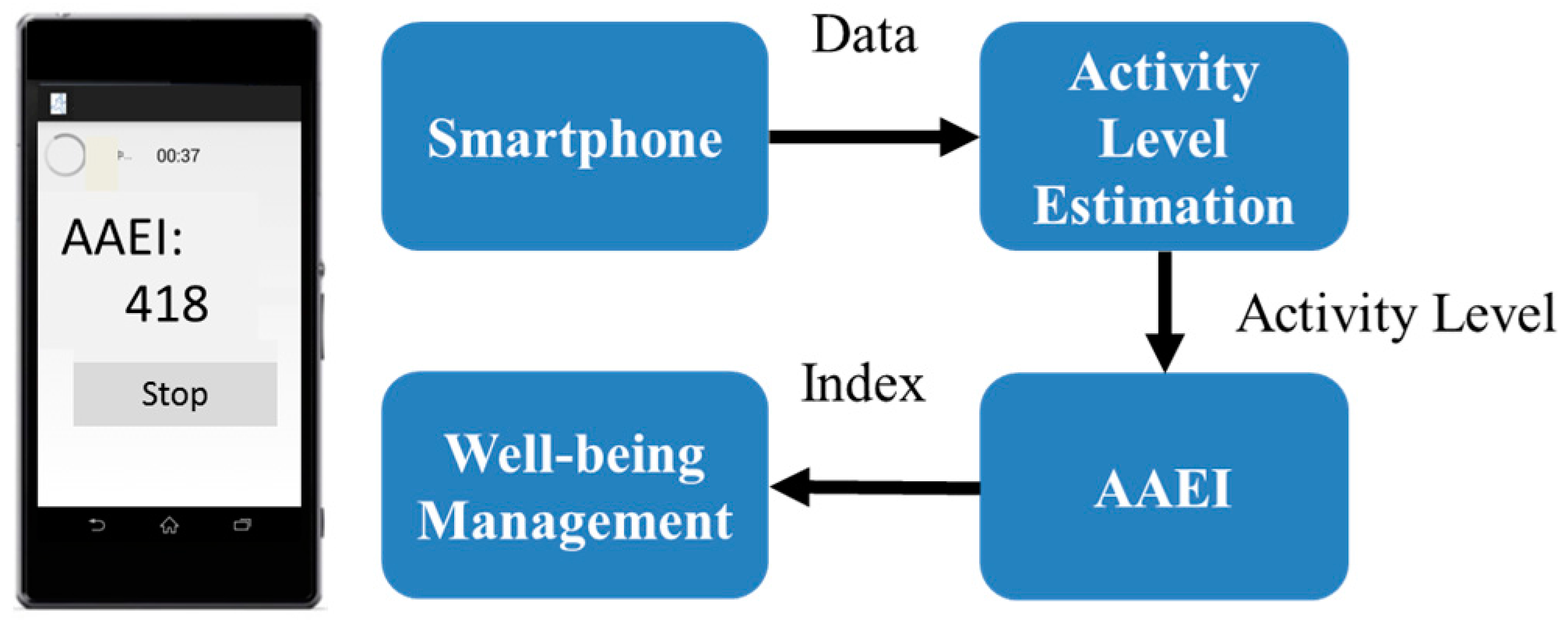
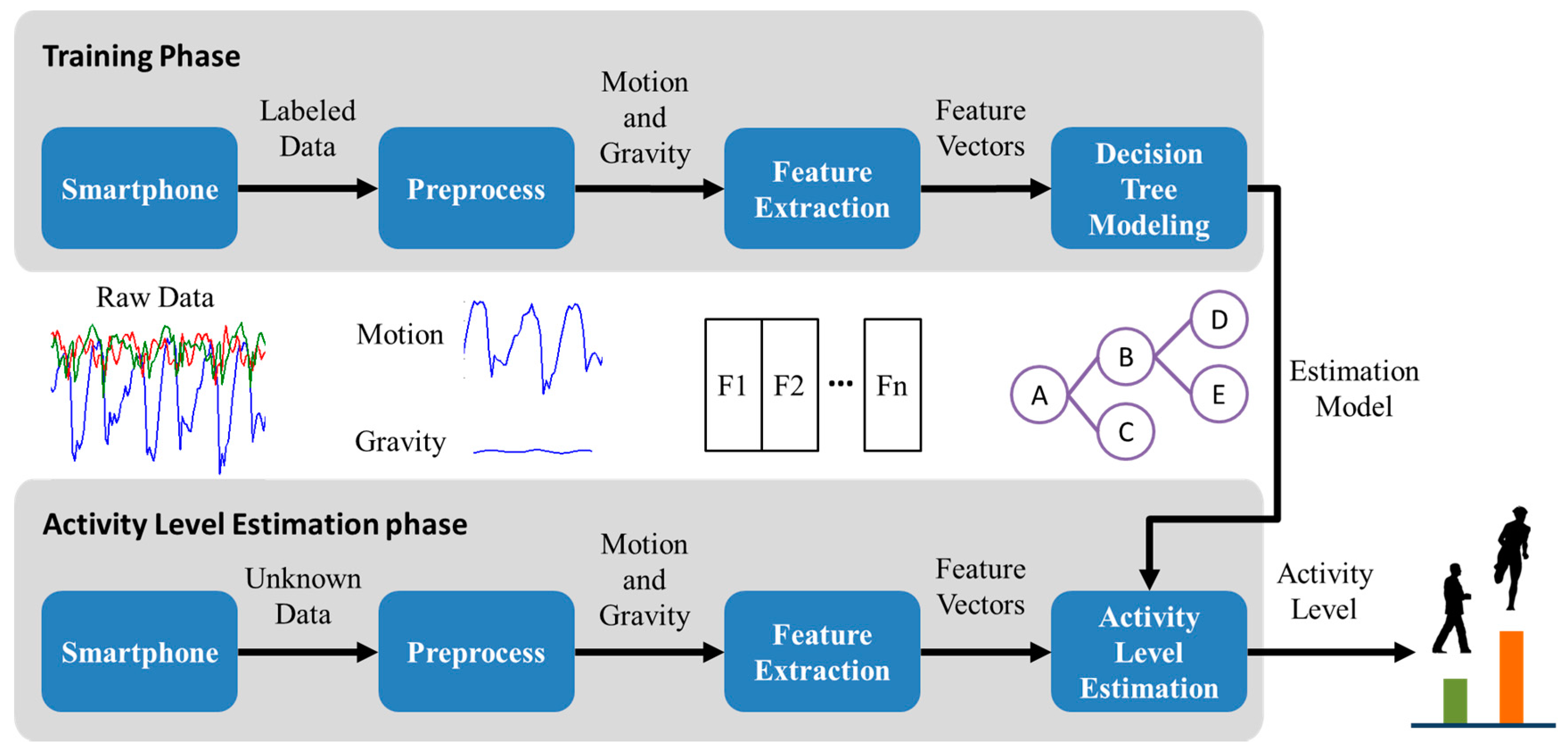
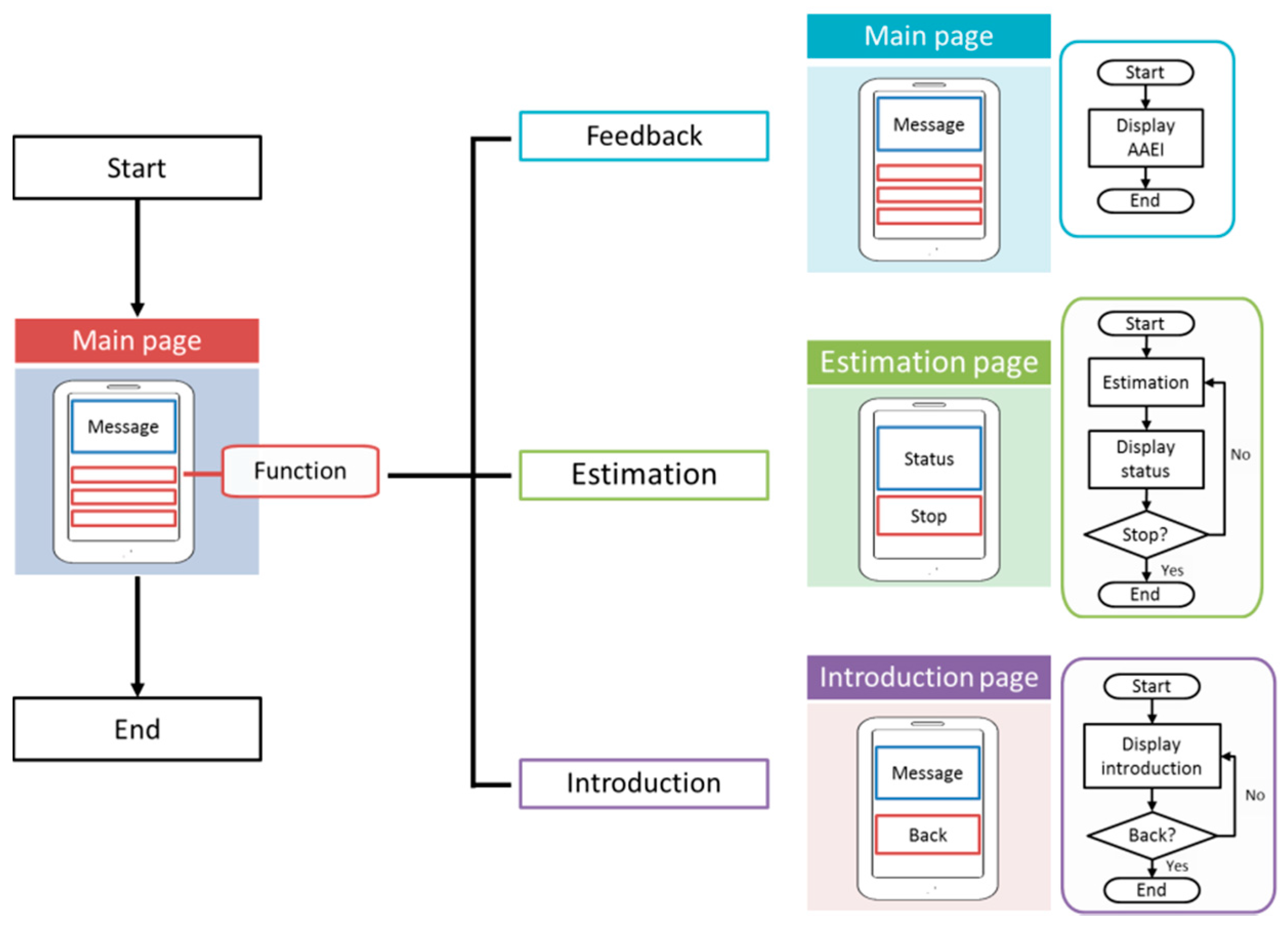
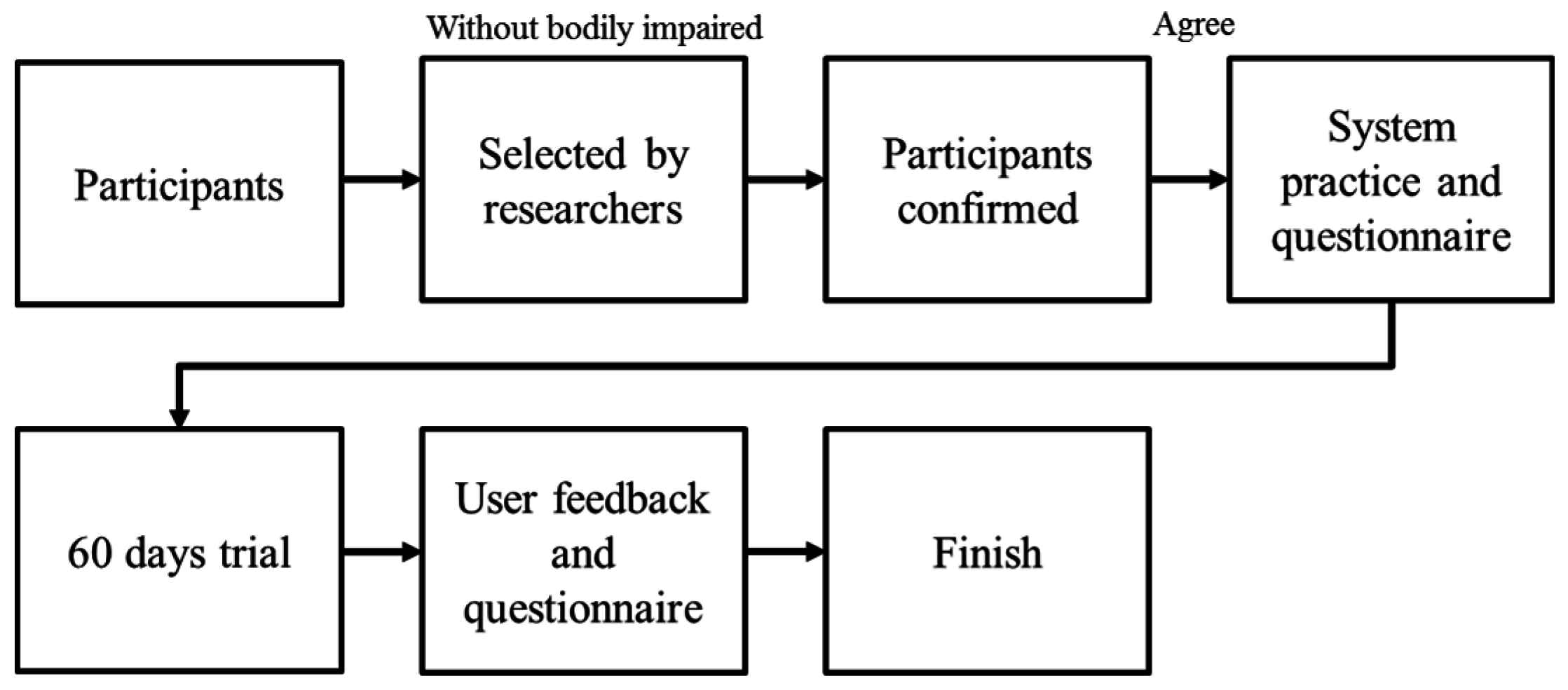
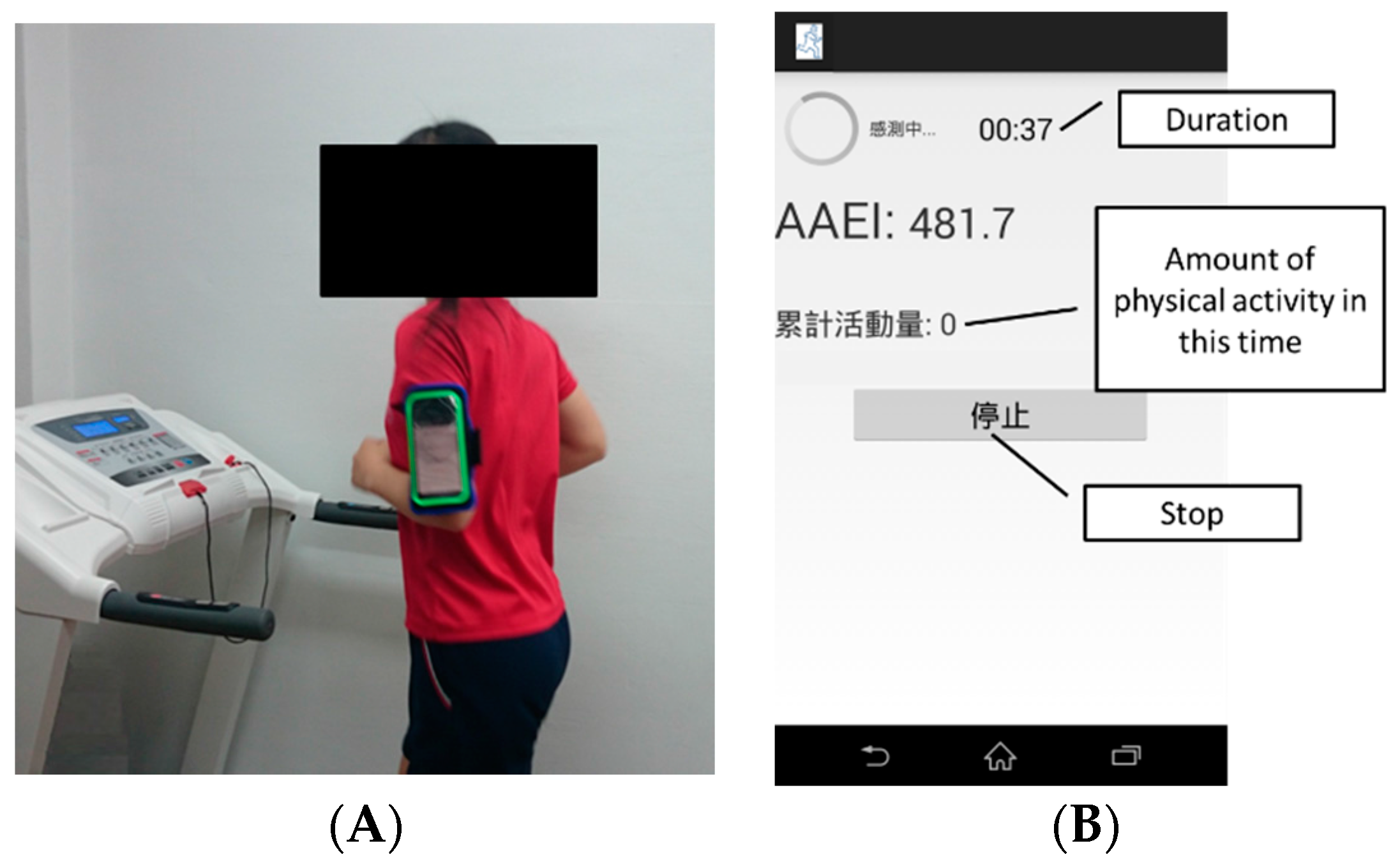


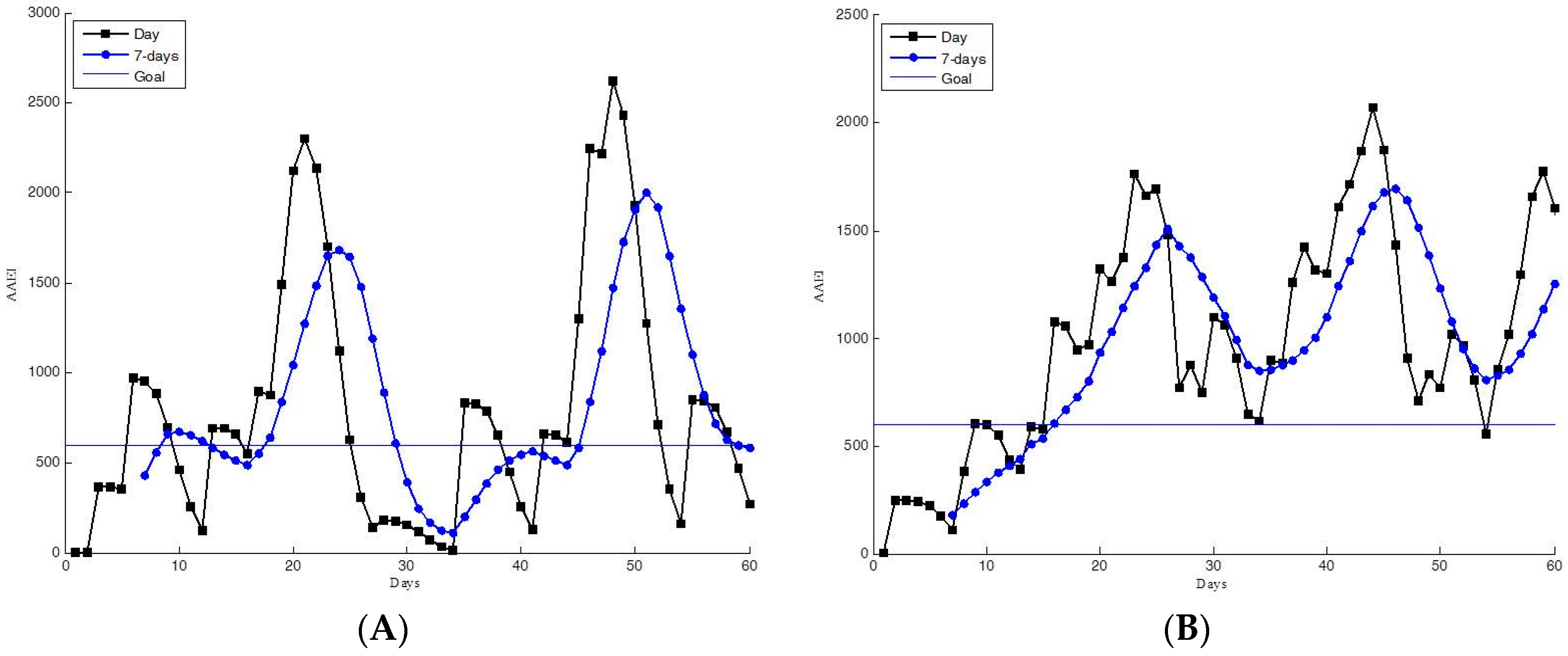
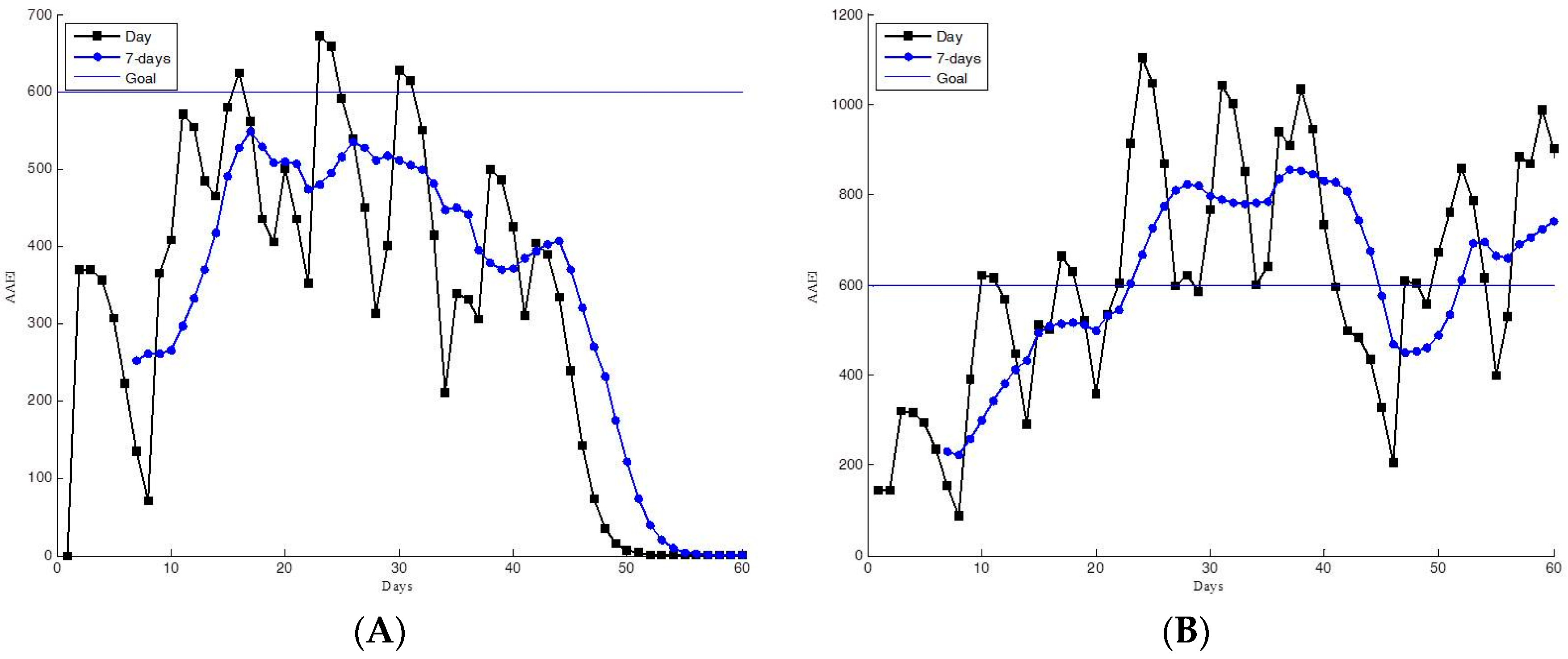
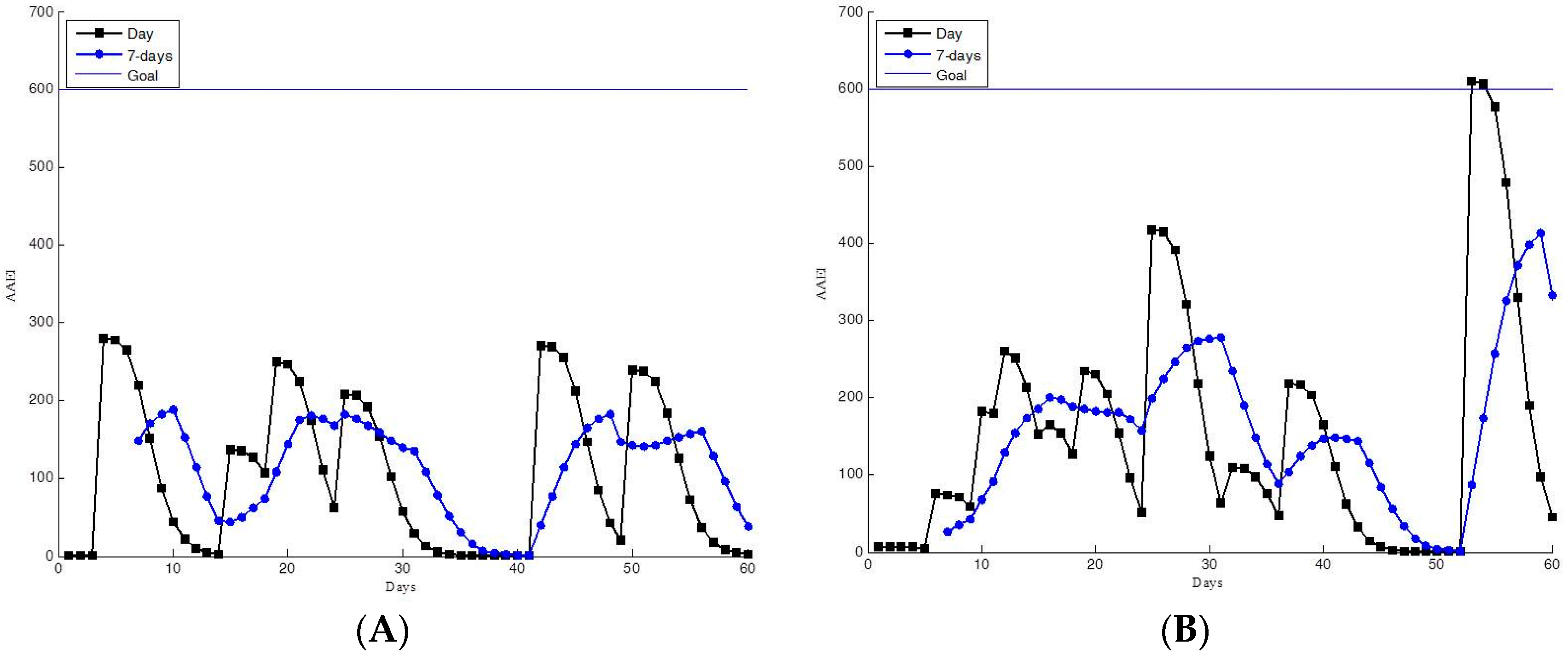

| Activity | Activity Level |
|---|---|
| Stationary | Sedentary |
| Walking slowly (<2 km/h) | Light |
| Walking (2–4 km/h) | Light |
| Walking fast (5–7 km/h) | Moderate: 5–6 km/h |
| Vigorous: 7 km/h | |
| Running (6–9+ km/h) | Vigorous: 6–8 km/h |
| Extremely vigorous: 9+ km/h |
| :, an index | : time interval from to , unit: day |
| : | : , activity level (M) multiple duration (T) in day |
| : | : )/7 |
| : , a constant defined as 2 | : , a coefficient estimated by accumulated physical activity |
| : i-th days before | : , a constant of attenuation defined as 0.5 |
| Questions | Single Time Used (n = 17) | 60 Days Trial (n = 18) |
|---|---|---|
| Do you agree that the AAEI can help me for fast understand my exercise performance? | 4.2 | 3.9 |
| Do you agree that the AAEI can help me for goal-setting? | 4.1 | 3.8 |
| Do you agree that the AAEI is clear and definite? | 4.2 | 4.1 |
| Do you agree that the AAEI can help me to increase or maintain sufficient physical activity? | 4.2 | 3.6 |
| Do you agree that the AAEI can be shared with people with less privacy concern? | 4.3 | 4 |
| Overall, do you agree that the AAEI and the system are useful for well-being management? | 4 | 3.5 |
© 2016 by the authors; licensee MDPI, Basel, Switzerland. This article is an open access article distributed under the terms and conditions of the Creative Commons Attribution (CC-BY) license (http://creativecommons.org/licenses/by/4.0/).
Share and Cite
Liu, C.-T.; Chan, C.-T. Exercise Performance Measurement with Smartphone Embedded Sensor for Well-Being Management. Int. J. Environ. Res. Public Health 2016, 13, 1001. https://doi.org/10.3390/ijerph13101001
Liu C-T, Chan C-T. Exercise Performance Measurement with Smartphone Embedded Sensor for Well-Being Management. International Journal of Environmental Research and Public Health. 2016; 13(10):1001. https://doi.org/10.3390/ijerph13101001
Chicago/Turabian StyleLiu, Chung-Tse, and Chia-Tai Chan. 2016. "Exercise Performance Measurement with Smartphone Embedded Sensor for Well-Being Management" International Journal of Environmental Research and Public Health 13, no. 10: 1001. https://doi.org/10.3390/ijerph13101001






